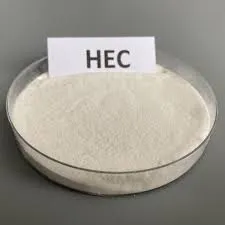
Верас . 24, 2024 12:26 Back to list
Exploring the Applications and Benefits of Hydroxypropyl Methylcellulose in Various Industries
Hydroxypropyl Methylcellulose (HPMC) An Overview
Hydroxypropyl Methylcellulose (HPMC) is a versatile and widely used cellulose derivative that has garnered significant attention across various industries, including pharmaceuticals, food production, cosmetics, and construction. This semi-synthetic polymer is derived from natural cellulose, which is modified through chemical reactions to produce a compound with unique properties. HPMC is especially valued for its film-forming, thickening, and emulsifying abilities, making it an essential ingredient in many applications.
Properties and Composition
HPMC is characterized by its white, odorless powder form, and it is soluble in water, forming a gel-like substance. Its solubility and viscosity can be modified by varying the degree of substitution and the molecular weight of the cellulose. Typically, it comprises hydroxypropyl and methyl groups, which provide it with enhanced properties such as improved solubility and stability. The unique structure of HPMC allows it to retain moisture and create a protective layer, which is crucial in many applications.
Applications in Pharmaceuticals
In the pharmaceutical industry, HPMC serves multiple purposes. It is primarily used as a binder and a coating agent in tablet formulations, enhancing the stability and bioavailability of active ingredients. HPMC is also crucial in controlled-release formulations, where it regulates the release of drugs over extended periods. Its non-toxic nature makes it suitable for various pharmaceutical applications, and it has gained approval from regulatory bodies such as the FDA for use in drug products.
Role in Food Industry
hydroxypropyl methylcellulose hpmc

HPMC finds numerous applications in the food industry as well. It is utilized as a thickener, stabilizer, and emulsifier in various food products, including sauces, dressings, and dairy items. Given its ability to improve texture and mouthfeel, HPMC is an essential component in gluten-free baking, providing the necessary elasticity and moisture retention in products lacking traditional wheat gluten. Its low caloric content adds to its appeal as a food additive, making it a popular choice for health-conscious consumers.
Applications in Cosmetics and Personal Care
In the cosmetics and personal care sector, HPMC is often incorporated into formulations such as creams, lotions, and gels. Its thickening and emulsifying properties ensure that products have a desirable consistency and feel. Additionally, it acts as a film-forming agent, providing long-lasting benefits and enhancing the application of cosmetic products. The non-reactive nature of HPMC makes it suitable for sensitive skin formulations, ensuring it is gentle and safe for consumers.
Construction and Other Industries
Beyond pharmaceuticals and food, HPMC is extensively used in the construction industry. It serves as an additive in cement and gypsum products, improving workability, adhesion, and water retention. This is vital during the curing process, as it helps achieve the desired strength and durability of construction materials.
Conclusion
Hydroxypropyl Methylcellulose (HPMC) is an indispensable substance across diverse sectors due to its multifunctional properties. Its ability to enhance the stability, texture, and performance of a wide range of products underscores its significance in modern industry. As research and development continue, it is likely that we will see even more innovative applications of HPMC in the future, further solidifying its status as a crucial component in various formulations.
-
The Widespread Application of Redispersible Powder in Construction and Building Materials
NewsMay.16,2025
-
The Widespread Application of Hpmc in the Detergent Industry
NewsMay.16,2025
-
The Main Applications of Hydroxyethyl Cellulose in Paints and Coatings
NewsMay.16,2025
-
Mortar Bonding Agent: the Key to Enhancing the Adhesion Between New and Old Mortar Layers and Between Mortar and Different Substrates
NewsMay.16,2025
-
HPMC: Application as a thickener and excipient
NewsMay.16,2025
-
Hec Cellulose Cellulose: Multi functional dispersants and high-efficiency thickeners
NewsMay.16,2025







